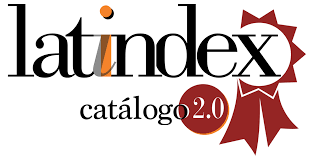El espejismo de la participación ciudadana en tiempos de COVID-19 / The mirage of citizen participation in times of COVID-19
DOI:
https://doi.org/10.5783/revrrpp.v10i20.671Keywords:
brecha digital, participación ciudadana, comunicación organizacionalAbstract
Resumen
La participación ciudadana es un caballo de batalla de instituciones, organizaciones y empresas, intentando contar con la ciudadanía para el desarrollo de actividades. Esta necesidad de participación se ha venido desarrollando de manera presencial en actividades formativas, foros, debates, reuniones, jornadas, entre otros eventos, que se han visto directamente afectadas en su organización ante la situación de crisis sanitaria mundial. Ante este marco epidemiológico, todos los organizamos se han visto abocados a trasladar al ámbito digital sus actividades, pero ¿todas las personas saben cómo participar, tiene la ciudadana lo recursos suficientes, es igual el contenido presencial que impartirlo en digital? Ante estas preguntas necesarias y actuales, obtenemos respuestas que conducen a una marcada brecha digital, que deja atrás la participación ciudadana.
Palabras claves: participación ciudadana, brecha digital, comunicación.
Abstract
This article aims to show how the pandemic situation has given rise to the digital exodus of activities that were originally designed to be carried out in person, organized by public bodies (town councils, county council and the Andalusian Ministry of Employment, Training and Autonomous Work) and non-governmental organizations (associations, foundations of Andalusia), raising the following questions: Are face-to-face activities transferred to the digital sphere without adapting? Are there triggers to encourage participation? Do you offer a solution in terms of technological tools or digital literacy to access the activity? To give answers to these questions, between April and September 2020 we have analyzed 233 activities, 91 activities of public organizations and 142 of social entities: training course, informative workshops, conferences, orientation, and presentation of resources. In these activities the main areas covered were: employment, social revitalization, new technologies, gender equality, health, entrepreneurship and resources for youth. With these questions, necessary and current, we obtain answers that lead to a lack of transformation of face-to-face activities towards the digital field, which does not take advantage of the benefits of digital tools; Institutions and organizations do not take into account the degree of knowledge of the public with respect to communication channels and that they require them to know how to use, without forgetting the economic circumstance and assuming that each person has the necessary software and hardware to be a connected citizen. In parallel, we have discovered that this acceleration of the digital transformation of face-to-face activities has found social entities devoid of knowledge and materials. On the one hand, it does not have the materials to carry out the subsidized programs, but the administration requires it to develop them, and on the other hand, it does not have the resources to offer citizens quality technological services, since its mission was based on in the face-to-face field, for which they demand training for their workers and collaborators, as well as computer equipment not only so that citizens can participate but also so that the organization itself can develop its relationship with the administrations.
Keywords: citizen participation, digital divide, communication.
Downloads
References
ALMANSA-MARTÍNEZ, A., VAN-ZUMMEREN, G. y HARO, R. (2019). Funcionalidades de Moodle y Edmodo en las enseñanzas medias y superiores. SEECI, 50. Recuperado el 1 de septiembre, de 2020, de https://doi.org/10.15198/seeci.2019.50.87-105
ARENAS ARIAS, G.J. (2020). Estrella Montolío y Mario Tascón, el derecho a entender. La comunicación clara, la mejor defensa de la ciudadanía. Eunomía. Revista en Cultura de la Legalidad, 19, 623-629. Recuperado el 17 de octubre de 2020, de https://doi.org/10.20318/eunomia.2020.5736
BARDIN, L. (1986). El análisis de contenido. Madrid: Akal.
BERELSON, B. (1952). Conten Analysis in Communication Researches. France: Glencoe III, Free Press.
BOJA (2020). Orden de 13 de marzo de 2020, por la que se adoptan medidas preventivas de salud pública en la Comunidad de Andalucía como consecuencia de la situación y evolución del coronavirus (COVID-19). Recuperado el 8 de septiembre de 2020, de https://www.juntadeandalucia.es/boja/2020/505/1
CALDEVILLA, D. (2009). Democracia 2.0: La política se introduce en las redes sociales. Pensar la Publicidad. Revista Internacional de Investigaciones Publicitarias, 3(2), 30-37. Recuperado el 1 de septiembre de 2020, de https://revistas.ucm.es/index.php/PEPU/article/view/16073
CANCA, J. (2020). La triple falta. EPALE - Plataforma electrónica dedicada a la enseñanza para adultos en Europa. Recuperado 3 de septiembre de 2020, de https://epale.ec.europa.eu/es/blog/la-triple-falta
CAÑADAS, F. J. (2017). Teletrabajo: Revisión teórica y análisis jurídico-laboral, 205–207. Recuperado el 29 de agosto de 2020, de https://hera.ugr.es/tesisugr/2675244x.pdf
CAPGEMINI (2020). La COVID-19 deja al descubierto los problemas de la brecha digital. Capgemini.com, 1-4. Recuperado 6 de julio de 2020, de https://www.capgemini.com/es-es/news/estudio-de-capgemini-la-covid-19-deja-al-descubierto-los-problemas-de-la-brecha-digital/
CARRERA, V. (2020). El derecho a entender. La nueva crónica.com. Recuperado 11 de octubre, de 2020 de https://www.lanuevacronica.com/el-derecho-a-entender
CENTROS PARA EL CONTROL Y LA PREVENCIÓN DE ENFERMEDADES (2020). Actividades diarias y salidas. Recuperado 14 de octubre de 2020, de https://espanol.cdc.gov/coronavirus/2019-ncov/daily-life-coping/going-out.html
OECD, (2020). COVID-19 y el sector minorista: impacto y respuestas políticas. Recuperado 8 de octubre de 2020, de http://www.oecd.org/coronavirus/policy-responses/covid-19-y-el-sector-minorista-impacto-y-respuestas-politicas-886315e6/
EUROPA PRESS (2020). El PIB caerá entre un 0,6% y un 4,5% con medidas por el Covid-19 y hasta un 8% sin ellas, según Fedea y BBVA. Recuperado 8 de octubre de 2020, de https://www.europapress.es/economia/macroeconomia-00338/noticia-pib-caera-06-45-medidas-covid-19-ellas-fedea-bbva-20200326170935.html
EPDATA.ES (2020). Número de ERTEs presentados en las consejerías autonómicas de Trabajo. Por el parón económico debido al coronavirus. Recuperado el 11 de septiembre de 2020, de https://www.epdata.es/numero-ertes-presentados-consejerias-trabajo-autonomicas/5b010537-339f-4636-966f-bcd63c330d8a
GONZÁLEZ DE MOLINA, I. (2019). A partir de los 55, analfabetos sin red. La Razón. Recuperado 3 de octubre de 2020, de https://www.larazon.es/actualidad/20191114/bvx4w757tzgcrp7ysahffzadhe.html
INE (2018). 6.4 Población que usa Internet (en los últimos tres meses). Tipo de actividades realizadas por Internet. Recuperado el 31 de octubre, de https://www.ine.es/ss/Satellite?L=es_ES&c=INESeccion_C&cid=1259925528782&p=1254735110672&pagename=ProductosYServicios%2FPYSLayout
INE (2020a). Anexo: impacto COVID-19. Recuperado el 16 de noviembre, de https://www.ine.es/ss/Satellite?blobcol=urldata&blobheader=application%2Fpdf&blobheadername1=ContentDisposition&blobheadervalue1=attachment%3B+filename%3DEEC_2020_completo.pdf&blobkey=urldata&blobtable=MungoBlobs&blobwhere=654%2F372%2FEEC_2020_completo.pdf&ssbinary=true
INE (2020b). Encuesta sobre Equipamiento y Uso de Tecnologías de Información y Comunicación en los Hogares. Año 2020. Recuperado el 16 de noviembre, de https://www.ine.es/prensa/tich_2020.pdf
KIHRER, R. (2020). COVID-19: digital exclusion reality. Recuperado 1 de septiembre de 2020, de https://epale.ec.europa.eu/es/blog/covid-19-digital-exclusion-reality
KRIPPENDORFF, K. (1990). Metodología de análisis de contenido. Teoría y práctica. Paidós. Barcelona.
LA MONCLOA, (2020). Plan España Digital 2025. Recuperado el 13 de septiembre de 2020, de https://www.lamoncloa.gob.es/presidente/actividades/Documents/2020/230720-Espa%C3%B1aDigital_2025.pdf
LÓPEZ, F. (2002). El análisis de contenido como método de investigación. XXI, Revista de Educación, 4, 167-179.
MARÍN, B. (2020). Cerrar la brecha digital, evitar el desastre. Recuperado 18 de octubre de 2020, de https://elpais.com/ideas/2020-10-16/cerrar-la-brecha-digital-evitar-el-desastre.html
ORGANIZACIÓN MUNDIAL DE LA SALUD. (2020). Preguntas y respuestas sobre la enfermedad por coronavirus (COVID-19). Recuperado 15 de octubre de 2020, de https://www.who.int/es/emergencies/diseases/novel-coronavirus-2019/advice-for-public/q-a-coronaviruses
RIFFE, D., LACY, S. y FICO, F.G. (1998). Analysing media messages. Using quantitative content analysis in research. Hillsdale, EE.UU.: Lawrence Erlbaum Associates.
RODICIO-GARCÍA, M. L., RÍOS-DE-DEUS, M. P., MOSQUERA-GONZÁLEZ, M. J., y PENADO ABILLEIRA, M. (2020). La Brecha Digital en Estudiantes Españoles ante la Crisis de la Covid-19. Revista Internacional De Educación Para La Justicia Social, 9(3), 103-125. Recuperado el 19 de octubre de 2020, de https://doi.org/10.15366/riejs2020.9.3.006
SERRANO, L., SOLER, A., y PASCUAL, F. (2020). El impacto del coronavirus en el mercado de trabajo de las regiones españolas. Recuperado 5 de octubre de 2020, de https://www.ivie.es/wp-content/uploads/2020/05/Covid19IvieExpress13_El-impacto-del-coronavirus-en-el-mercado-de-trabajo-de-las-regiones-espa%C3%B1olas.pdf
SILVÁN, C. y QUÍFEZ, L. E. (2020). Efectos y consecuencias de la crisis de la COVID-19 entre las personas con discapacidad. Odismet- Fundación ONCE. Recuperado el 20 de octubre de 2020, de https://www.odismet.es/sites/default/files/2020-07/Informe_EstudioCOVID_19_v3_0.pdf
EUROPEAN COMMISSION (2020). The Digital Economy and Society Index (DESI). Recuperado 10 de octubre de 2020, de https://ec.europa.eu/digital-single-market/en/digital-economy-and-society-index-desi
Downloads
Published
How to Cite
Issue
Section
License
Authors publishing in this journal agree to the following terms:
a. Authors retain copyright and grant the journal the right to be the first publication of the work as licensed under a Creative Commons Attribution License that allows others to share the work with an acknowledgement of authorship of the work and initial publication in this journal.
b. Authors may separately enter into additional arrangements for non-exclusive distribution of the version of the work published in the journal (e.g., placing it in an institutional repository or publishing it in a book), with an acknowledgement of initial publication in this journal.
c. Authors are allowed and encouraged to disseminate their work electronically (e.g. in institutional repositories or on their own website) before and during the submission process, as it can lead to productive exchanges, as well as earlier and higher citation of published work (see The Effect of Open Access).




